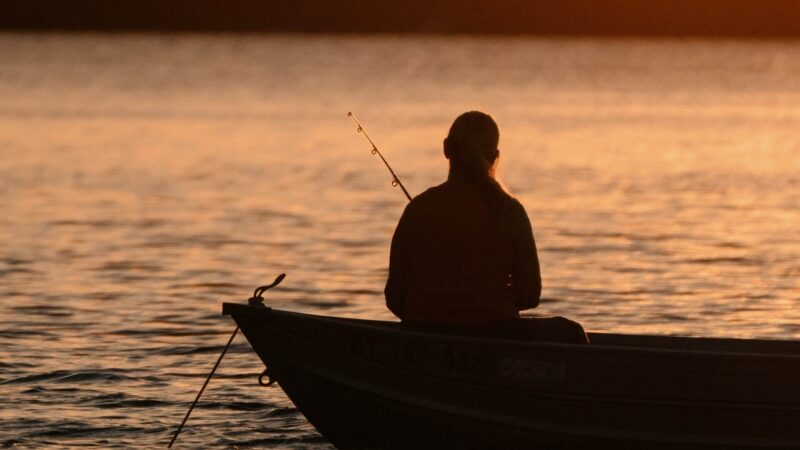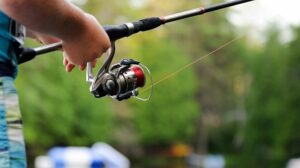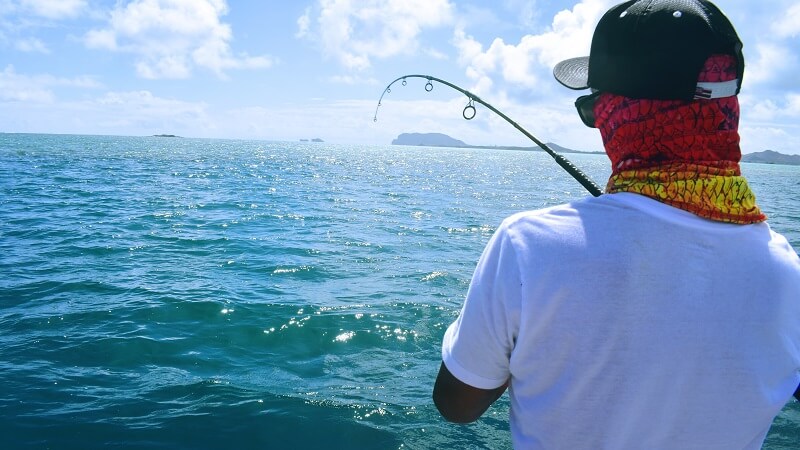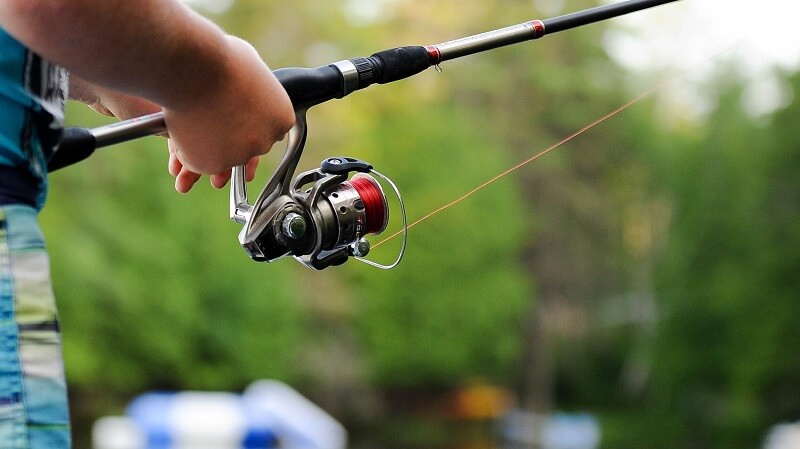
6 Essential Items For Your River Camp Adventure
Ah, river camp; the very phrase conjures images of serene waterways and nights under the stars. But to make this dream a reality, you need

Telescopic fishing rods, also known as travel rods, are a convenient choice for anglers who want the versatility of a full-sized rod that can collapse down for easy transport and storage.
With proper care and maintenance, a quality telescopic rod can provide years of reliable performance.
Here are some expert tips on using and caring for your telescopic fishing rod:
When choosing a telescopic fishing rod, you’ll want to consider the extended length, number of sections, action, power, guides, and materials. Think about the type of fishing you’ll primarily use the rod for.
Longer and more powerful rods are best suited for bigger fish, while shorter and more flexible rods work well for smaller species.
The beauty of a telescopic rod is convenience, but they still require care in transport and storage compared to one-piece models. Always transport rods in a protective tube or sleeve.
For airline travel, check manufacturer guidelines for packing telescopic rods as baggage. When storing the rod, avoid excess heat, moisture, and humidity.
Allow the rod to air dry before collapsing and store it in a rod sock or sleeve. Lay sections horizontally instead of vertically leaning against a wall to prevent sagging over time.
Use a padded rod case or tube for car travel and storage at home. This will prevent accidental damage from other gear bumping against the rod.
When flying, follow TSA and airline rules for checking rods as luggage. Some allow telescopic rods in carry-on bags, others require checking the rod case.
Don’t leave telescopic rods sitting in hot vehicles for extended periods, as excess heat can damage components.
Store rods in a cool, dry location away from exterior walls or windows to prevent temperature fluctuations and moisture buildup.
Lay the rod bag horizontally on a shelf instead of vertically in a corner. Horizontal storage helps prevent the sagging of sections over time.
Unless camping in wet conditions, avoid collapsing and storing rods wet. Allow to fully air dry before packing away to prevent corrosion and sticking.
When extending the rod, don’t force sections into place. Gently pull each section out in order, twisting slightly, until they lock into position.
Make sure not to extend past the minimum overlap marks. Lightly twist when joining sections to ensure proper alignment for optimal power transmission along the blank.
Sections should always sit flush, with guides properly centered along the length of the rod when fully extended.
Carefully pull out one section at a time instead of trying to yank multiple sections out together, which can cause damage.
Look for any alignment dots or minimum overlap depth markers to avoid extending sections too far. This helps prevent breakage.
A very light twist when joining sections can help seat them together properly. But over-twisting can grind down parts over time.
Visually check that the guides align properly all the way from the tip to the reel seat when fully extended and connected. Misaligned guides create friction and impair smooth casting.
Sections must join completely flush, not overlapping or leaving any gaps between pieces. Gaps can cause rod failure when fighting a big fish.
Proper tension between collapsed sections is key for good performance. Over time, sections can loosen with repeated extending and collapsing.
Check for looseness and gently twist sections to tighten joints back up if needed. Don’t overtighten, as this can damage components.
Keeping the rod lubricated with light oil made for fishing gear can help maintain smooth motion between sections.
When extending, see if any sections slide out more freely than others. This indicates loosening the tension on those connections.
Try gently twisting while collapsing to increase tension on loose sections. Be careful not to be overtightened or you may shear internal pins and springs.
Overly loose sections may need to be cleaned and re-lubricated to prevent seizing up completely. Use lubricants made specifically for fishing rods, not household oils.
Sections tightened unevenly put stress on the rod when fighting fish. Maintain even tension throughout for optimal performance.
When collapsing, take care not to forcibly jam tight sections together. This can damage parts over time.
Always disassemble and clean your telescopic rod after a fishing trip, especially in saltwater which can cause corrosion. Rinse sections under fresh water while gently wiping down with a damp cloth.
Pay special attention to guides, inserts, and foam grips which can collect residue. Allow the air to fully dry before collapsing and storing.
Occasionally apply a protective coat of silicone or lubricant to the male ends to prevent seizing over time.
Rinsing with fresh water removes salt, sand, or dirt that can grind away components or allow corrosion if left to sit.
Wipe inserts carefully with a soft damp cloth. Avoid scraping, which can scratch the smooth surface needed for frictionless line flow.
Use a thin brush like an old toothbrush to gently clean between guides without damaging delicate wire loops.
After drying, you may choose to apply a corrosion inhibitor or lubricant on the male ends before collapsing. This prevents seizing saltwater oxidation over time.
For routine maintenance, occasionally clean the interior female ends by extending a bit and running the damp cloth through each section.
Foam grips and cork handles should be washed with mild soap and rinsed thoroughly to prevent residue buildup over time.
To prevent damage when collapsed, position the rod guides facing upwards and the reel facing downwards. Never forcefully jam sections together when collapsing.
Close line guides before collapsing. Take care not to dent or chip sections against other gear during transport. When extended, don’t surpass the maximum draw length or lift heavy objects which can warp the blank over time.
With guides facing up and reeling down in the rod case, weight pressure is distributed evenly when packed among other gear.
Forcing sections when collapsing can damage pins, springs, and tight tolerances that keep sections moving smoothly.
Line threaded through the guides can catch and tangle when collapsing if not reeled at first. This applies extra pressure on the rod components.
Dents and chips in composite materials like graphite can develop into larger fractures or split over time under fishing stress.
Don’t use a telescopic rod to lift excessive weight like a landing net with a huge fish. This can gradually warp the blank and guides.
With proper care, telescopic rods can last for many fishing adventures. But accidents happen, and normal wear and tear takes a toll over the years.
Replace any worn-out guide inserts or chipped ceramic guides as needed. Rod epoxy can repair minor cracks in the blank.
Lubricate stuck sections, but replace any irretrievably seized parts. Most telescopic rod manufacturers sell replacement components if sections become damaged or lost.
Replacement tip tops and guide inserts are inexpensive fixes to reduce line friction on older rods. Upgrading guide material from aluminum to ceramic can enhance performance.
Apply rod-bonding epoxy to minor cracks and continue monitoring for any expansion after curing. Don’t attempt to repair major blank damage yourself.
Sections that won’t budge can sometimes be freed up with lubricants and adjusting tension. But replacement may be required if the damage is extensive.
Many telescopic rod companies sell section replacements online along with springs, pins, and assembly parts. Some will repair rods directly for a fee.
Make sure to indicate rod model and size details when ordering replacement sections or components to ensure proper fit.
A quality telescopic fishing rod offers the versatility to catch fish near and far. Follow these expert tips on careful transport, storage, cleaning, operation and maintenance.
With the right care and precautions, your telescopic rod will deliver lasting performance for all your fishing trips, whether hiking into remote waters or tossing in a line down at the local pond.


Ah, river camp; the very phrase conjures images of serene waterways and nights under the stars. But to make this dream a reality, you need

Embarking on a fishing on an inflatable boat journey combines adventure with the tranquility of being on the water. Whether you’re a seasoned angler or

Are you ready to dive into the world of telescopic fishing rods? If you’ve got a telescopic fishing rod in your hands, you’re in for

Are you ready to embark on a journey with your trusty telescopic fishing rod? This versatile tool has revolutionized the angler’s world, offering convenience and

Ah, river camp; the very phrase conjures images of serene waterways and nights under the stars. But to make this dream a reality, you need

Embarking on a fishing on an inflatable boat journey combines adventure with the tranquility of being on the water. Whether you’re a seasoned angler or

Are you ready to dive into the world of telescopic fishing rods? If you’ve got a telescopic fishing rod in your hands, you’re in for

Are you ready to embark on a journey with your trusty telescopic fishing rod? This versatile tool has revolutionized the angler’s world, offering convenience and
Copyright © 2024 luretelescopicfishingrod. All Rights Reserved.